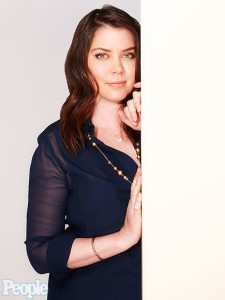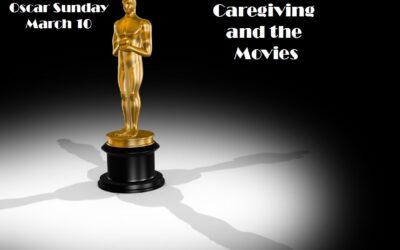 The physician-assisted end-of-life debate received a jolt the last few weeks as an unlikely heroine for the Death With Dignity movement emerged in the 29-year-old terminally ill brain cancer patient Brittany Maynard. Given the choice of a painful death where her seizures will multiply, intensify and last longer, her memory loss will become permanent and her excruciating headaches will rob of her of any peaceful, pain-free moments, Maynard chose to end her life her way. Along with her newlywed husband and her mother and stepfather, Maynard moved this summer from Northern California to Portland, Oregon, one of only four states where adults with terminal diagnoses can legally determine when and how they will die.
The physician-assisted end-of-life debate received a jolt the last few weeks as an unlikely heroine for the Death With Dignity movement emerged in the 29-year-old terminally ill brain cancer patient Brittany Maynard. Given the choice of a painful death where her seizures will multiply, intensify and last longer, her memory loss will become permanent and her excruciating headaches will rob of her of any peaceful, pain-free moments, Maynard chose to end her life her way. Along with her newlywed husband and her mother and stepfather, Maynard moved this summer from Northern California to Portland, Oregon, one of only four states where adults with terminal diagnoses can legally determine when and how they will die.
The death with dignity movement began back in the early ‘90s in Oregon when a ballot measure passed and eventually became law in 1997. The definition of death with dignity is that mentally competent adults who have a terminal illness may request a doctor prescription for life-ending medication that will be self-administered. It was around this same time that Jack Kervorkian became a lightning rod for the controversial act of euthanasia where in his estimation he helped 130 people in physician-assisted suicide. To date, Oregon, Montana, Washington and Vermont have state laws protecting death with dignity decisions and legally allowing participating physicians to prescribe lethal doses of medication to terminal patients for self-administration. New Mexico courts have upheld cases although appeals are in progress and several other states have pending death with dignity legislation including Connecticut, Hawaii, Kansas, Massachusetts, New Hampshire, New Jersey and Pennsylvania and a measure is set to be introduced in Colorado in January.
Over the last 20 years, national Gallup polls have shown the majority of Americans – 70 percent – support death with dignity rights for individuals. And while end-of-life conversations are difficult, especially for adult children serving as family caregivers for their older parents, a Pew Research study found 35 percent of Americans have actually put their wishes in writing.
In order to ensure wishes are carried out, it is not just enough to discuss it with family. Having a legally binding document, typically a living will, durable power of attorney for medical decisions and a do not resuscitate (DNR) or do not intubate (DNI) order documents are required. One document that is lesser known but extremely powerful and helpful to caregivers is called The 5 Wishes. More than 18 million Americans have created a 5 Wishes document that meets legal requirements as a living will in 42 states. The document outlines: 1) Who you want to make your health care decisions if you are unable; 2) The type of medical treatment you want or don’t want; 3) How comfortable you want to be; 4) How you want people to treat you; 5) What you want your loved ones to know.
Trends in health care show as a nation we are learning how to die with dignity. With the increase in hospice care at home or in long-term care facilities, more than half of the 2.5 million people who die every year can receive compassionate care where a team of health care and spiritual experts help the patient and family members cope with end of life. But that does not mean end-of-life wishes are overlooked in the hospital setting where the Centers for Disease Control and Prevention report one-third of all deaths occur.
In May, several Los Angeles area hospitals and health care providers endorsed some groundbreaking guidelines on how to facilitate patient end-of-life wishes. The coalition included: Cedars Sinai Hospital, Healthcare Partners Medical Group, Kaiser Permanente Southern California, Keck Medicine of USC, Los Angeles County+USC Medical Center, Memorial Care Health System, Olive View-UCLA Medical Center, Providence Little Company of Mary Medical Center Torrance, Providence Trinity Care Hospice and UCLA Health System. The guidelines require doctors, normally only schooled in saving lives, to explain clearly to patients when a medical treatment under consideration, such as feeding tubes, intubation or dialysis may deprive the person of life closure or preclude a peaceful death. The guidelines are the compassionate care California health care organizations are striving to achieve where patients have the chance to say to a loved one, “I love you,” “Forgive me,” or “Good-bye” one last time.
When Maynard’s April YouTube video about ending her life on her terms went viral and recently surpassed 9 million views, it was because a youthful, vibrant, newly married woman was deciding how her life would soon end. But dying at 29 or 99 should be the same. Maynard said at the time, “I had no choice to be diagnosed with a brain tumor but I can make a choice how I spend my last day.” For Maynard that means spending it surrounded by family in her bed at home and free of terrible pain. She was upset that people would see her choice as suicide calling that label for her situation “really unfair.”
For the person with the diagnosis, the dilemma is how not to have death affect loved ones in devastating ways. Maynard’s argument for choosing death with dignity is to spare her husband and parents the struggle of watching her in pain, losing her quality of life day by day, hour by hour.
Although Maynard released a second video last week explaining that while her health continues its rapid decline, she can still smile and laugh with family and friends and that she may let the November 1 chosen date pass, as I write this article the news reports Maynard has in fact taken her last breath in the arms of her husband and mother.
Maynard’s mother, Debbie Ziegler, had said she would be “honored” to become a caregiver for her adult daughter as she loses her faculties. Ziegler would have lovingly bathed, fed and diapered her adult daughter as she had when she was a child. But in the end, Maynard’s mother said the decision is her daughter’s.
“It’s not my job to tell her how to live and it’s not my job to tell her how to die,” said Ziegler on the video. “It is my job to love her through it.”
It is this gift of choice about how and when we will die that may be most precious to all of us and the gift which family caregivers can become the partner in fulfilling.




I blog often and I truly thank you for your information. This
great article has truly peaked my interest.
I will book mark your website and keep checking for new details about once a week.
I subscribed to your Feed as well.
Hi,
I want to tell you that I’m using this site for a long time and you
write really good content. I shared your last post on twitter and
got a lot of positive feedbacks.
Keep up the great work!